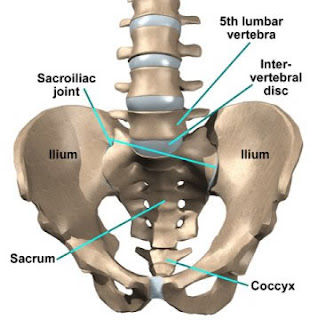Almost everyone can benefit from stretching the soft tissues - the muscles, ligaments and tendons - in the back, legs, buttock, and around the spine. The spinal column and its contiguous muscles, ligaments and tendons are all designed to move, and limitations in this motion can make back pain worse.
Patients with on going back pain may find it takes weeks or months of stretching and other back exercises to mobilize the spine and soft tissues, but will find that meaningful and sustained relief of back pain will usually follow the increase in motion.
Keep the following in mind when starting a stretching routine as part of a program of back exercises:
- Wear comfortable clothes that won’t bind;
- Stretching should be pain free; do not force the body into difficult positions;
- Move into the stretch slowly and avoid bouncing, which may actually tear muscles;
- Stretch on a clean, flat surface that is large enough to move freely;
- Hold stretches long enough (20-30 seconds) to allow muscles or joints to become loose; and
- Repeat the stretch, generally 5 – 10 times.
If one already has low back pain or neck pain, it is best to check with a physician or physical therapist to discuss whether the following neck, shoulder and lower back pain exercises
Neck and Shoulder Stretches
A stiff back is sometimes accompanied by a
stiff neck. The following exercises can be done to stretch the neck and shoulder area.
Flexion Stretch—Chin to Chest
While standing or sitting, gently bend the head forward while bringing the chin toward the chest until a stretch is felt in the back of neck.
Lateral Flexion—Ear to Shoulder
This exercise stretches the neck area below the ears as well as the top of the shoulder. To begin, gently bend the neck to one side as if to touch the ear to the shoulder until a stretch is felt in the side of the neck. Switch to stretch the other side.
Back Exercise Stretches
Many back pain patients know the feeling of tension in the back, especially first thing in the morning. These stretching back exercises can help bring back some suppleness and increase mobility, decreasing back pain and discomfort.
Back flexion exercise
While lying on one’s back, pull both knees to the chest while simultaneously flexing the head forward until a comfortable stretch is felt in a balled-up position.
Knee to Chest Stretch
While lying on the back with the knees bent and both heels on the floor, place both hands behind one knee and bring it to the chest.
Hips and Gluteus Stretches
The hips and buttocks (where the gluteus muscles are) support the lower back, and stretching these muscle groups plays a pivotal role in maintaining spine flexibility.
Hip stretch
while standing with feet shoulder-width apart, take a half-step back with the right foot, bend the left knee and shift weight back to the right hip. While keeping the right leg straight, bend forward more and reach down the right leg until a stretch in the outer hip is felt.
Piriformis muscle stretch
The piriformis muscle runs through the buttock and can contribute to back pain or leg pain. To stretch the this muscle, lie on the back and cross one leg over the other and gently pull the other knee toward the chest until a stretch is felt in the buttock area.









